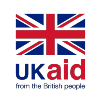Programmes that aim to tackle complex societal issues, such as the worst forms of child labour, require rich partnerships that bring together different perspectives. CLARISSA’s consortium partnership adopts an empowerment approach to the interventions we deliver and our ways of working together. Part of this approach involves ongoing reflection and learning about how we work together in our partnership, and how this can be adapted if needed.
This learning note focuses on a method used in CLARISSA to both reflect on and strengthen how we work in partnerships – the partnership rubric. We found that using the rubric flexibly was key to mitigating some of the challenges of such a complex consortium. This included using it in different sizes of forum, with different levels of preparation. Periodically adapting it for country context and as new partners came on board also helped ensure a shared sense of our preferred ways of working as the project progressed.
CITATION
Snijder et al. (2023) Using a ‘Partnership Rubric’ in Participatory Evaluations, CLARISSA Learning Note 3, Brighton: Institute of Development Studies, DOI: 10.19088/CLARISSA.2023.001
 Download full article
Download full article